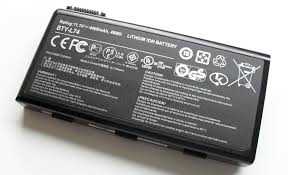ICAO Lithium Batteries on Planes Rules
Civil Aviation Authority (CAA) and UK airline operators have restrictions on flying with certain types of batteries carried either on your person or in your baggage.
Most battery-powered devices need to meet flight safety laws. They may also need approval by airport authorities before you can fly with them.
Are you planning on flying with devices or items that contain batteries – especially a lithium ion rechargeable battery?
If so, you must follow the information below. The rules get taken from the International Civil Aviation Organisation Technical Instructions for the Safe Transport of Dangerous Goods by Air.
Restrictions implemented by other countries in the interests of aviation security may further limit or forbid the carriage of some of the items listed. Additionally, the airlines and security screening agencies have the right to refuse the carriage of certain items on board a plane.
Passengers should contact their airline in advance for clarification of the flying rules and regulations. The same applies when planning to travel with lithium batteries or other dangerous goods that require the airline’s approval (indicated in the tables below).
Note: Non-spillable batteries are also known as wet filled with acid or alkali or gel-type batteries.
Flying with Lithium Batteries UK
The term ‘lithium battery’ refers to a family of batteries with different chemistries. They comprise of many types of cathodes and electrolytes. As a rule, they separate into two battery types:
Lithium Metal Batteries
- In most cases, they are non-rechargeable batteries which have lithium metal or lithium compounds as an anode.
- Lithium metal batteries are generally used to power devices such as watches, calculators and cameras.
Lithium-ion Batteries (Li-ion batteries)
 By comparison, lithium-ion batteries are rechargeable batteries in which lithium ions move between the anode and the cathode. It uses an intercalated lithium compound as the electrode material instead of the metallic lithium used in lithium batteries.
By comparison, lithium-ion batteries are rechargeable batteries in which lithium ions move between the anode and the cathode. It uses an intercalated lithium compound as the electrode material instead of the metallic lithium used in lithium batteries.
- As a rule they are a rechargeable battery commonly used in consumer electronics.
- Also included within lithium-ion batteries are lithium polymer batteries.
- Lithium-ion batteries are generally found in mobile telephones, laptop computers.
Battery Powered Equipment
UK aviation restrictions apply to battery-powered equipment which is capable of generating extreme heat. This is because it could cause a fire if activated. En example would be underwater high intensity lamps.
The heat-producing component and the battery are isolated from each other by the removal of the heat-producing component, the battery or another component (e.g. fuse).
Any battery that has been removed must be protected against short circuit by placing in its original retail packaging or by otherwise insulating the terminals. This could mean taping over exposed terminals or placing each battery in a separate bag or protective pouch.
| Items Containing Batteries | Carry On Baggage | Hold Baggage | Hand Carry | Approval |
|---|---|---|---|---|
| Battery-powered equipment (might generate extreme heat) | Yes | Yes | No | Required |
Battery Powered Suitcases
UK aviation restrictions also apply to battery powered suitcases. They are usually powered by nickel-metal hydride batteries. Any electrical battery or battery powered device which has the potential of a dangerous evolution of heat must be prepared for transport to prevent:
- A short-circuit by disconnection of the battery and effective insulation of exposed terminals.
- Accidental activation.
The airline’s approval is not required to carry a battery-powered suitcase. But, the passenger must contact their airline before traveling to get the information contained within the ICAO Technical Instructions.
| Items Containing Batteries | Carry On Baggage | Hold Baggage | Hand Carry | Approval |
|---|---|---|---|---|
| Battery powered suitcases (powered by nickel-metal hydride) | Yes | Yes | N/A | Not Required |
Portable Electronic Devices
UK aviation restrictions apply to portable electronic devices containing lithium ion batteries exceeding a Watt-hour rating of 100 Wh but not exceeding 160 Wh – when carried for personal use. Batteries and cells must be of a type which meets the requirements of each test in the UN Manual of Tests and Criteria, Part III, subsection 38.3.
It may be necessary to contact the battery manufacturer before traveling to confirm they have complied with the requirements. These items should be carried as carry-on baggage.
| Items Containing Batteries | Carry On Baggage | Hold Baggage | Hand Carry | Approval |
|---|---|---|---|---|
| Portable electronic devices containing lithium ion batteries | Yes | Yes | Yes | Required |
| Devices powered by fuel cells (e.g. camera, phone, laptop) | Yes | No | Yes | Not Required |
| Devices carried for personal use (e.g. watch, cameras, phone) | Yes | Yes | Yes | Not Required |
| Equipment containing a non-spillable battery | Yes | Yes | No | Not Required |
Important: Another section explains battery collection responsibilities for retailers and distributors in the United Kingdom.

